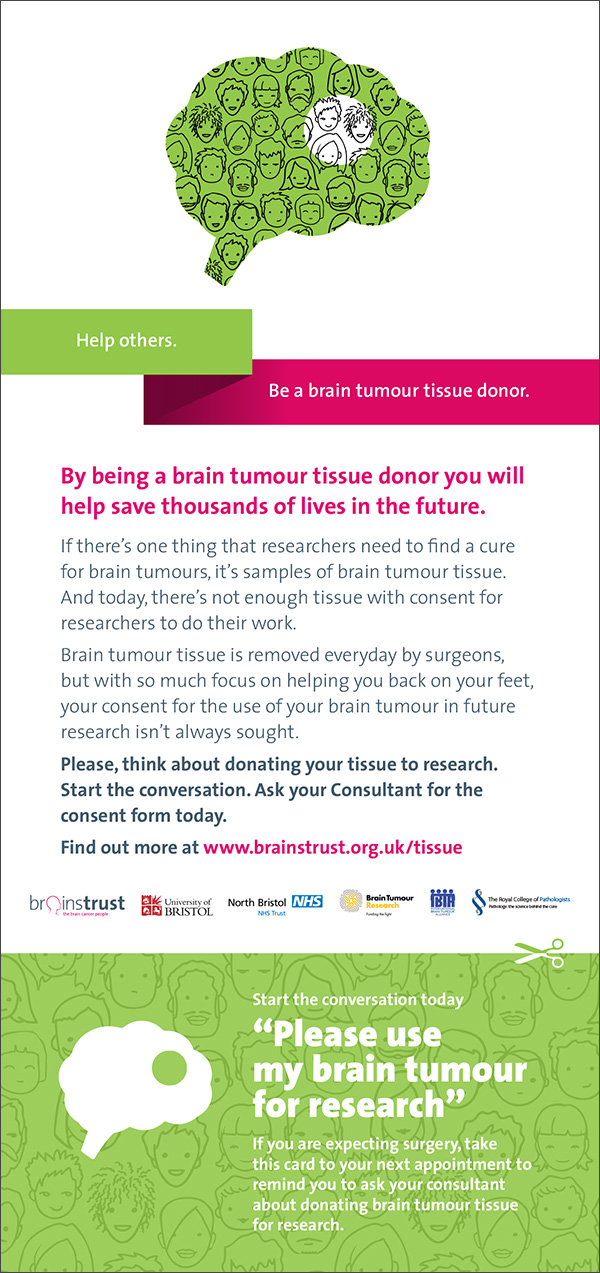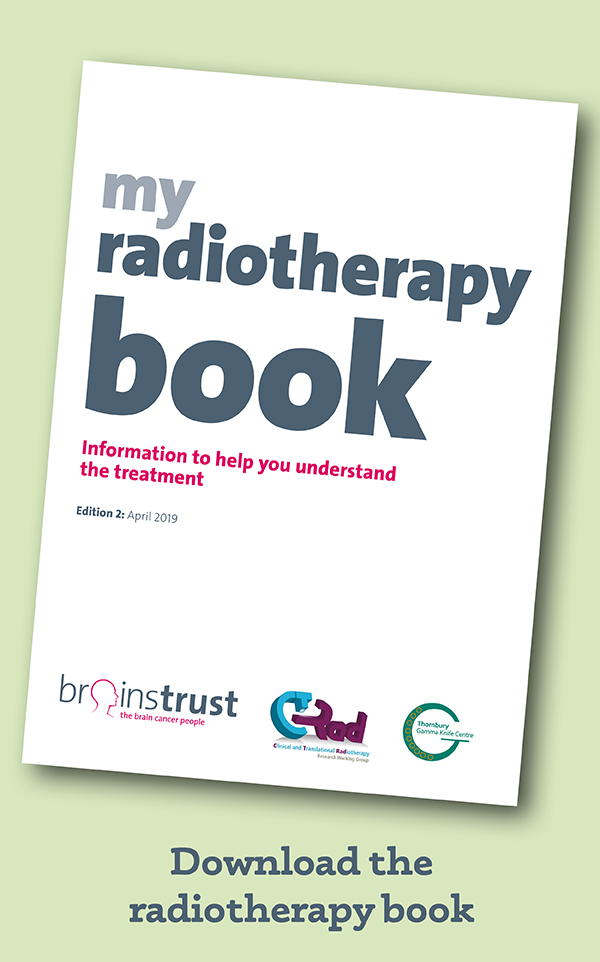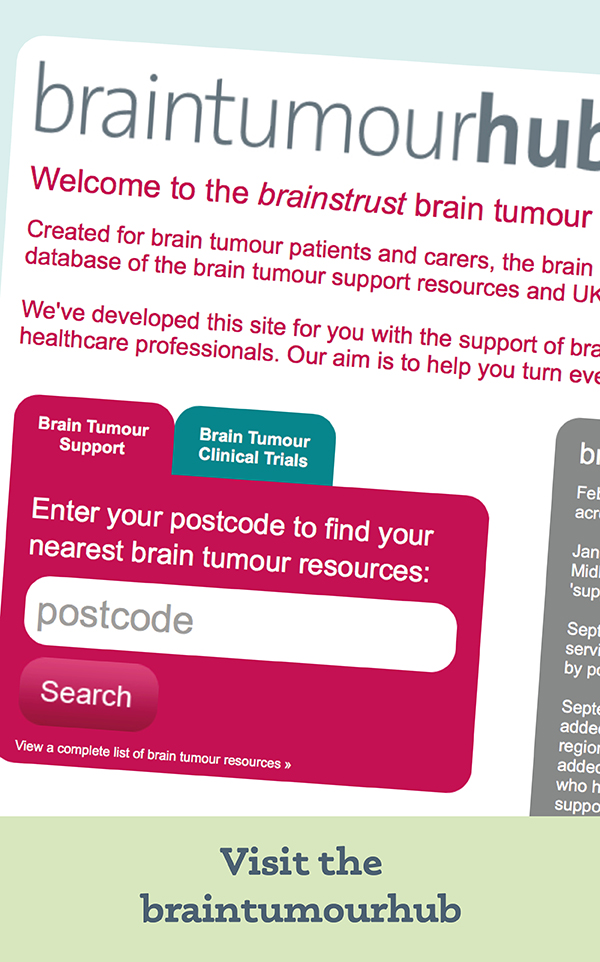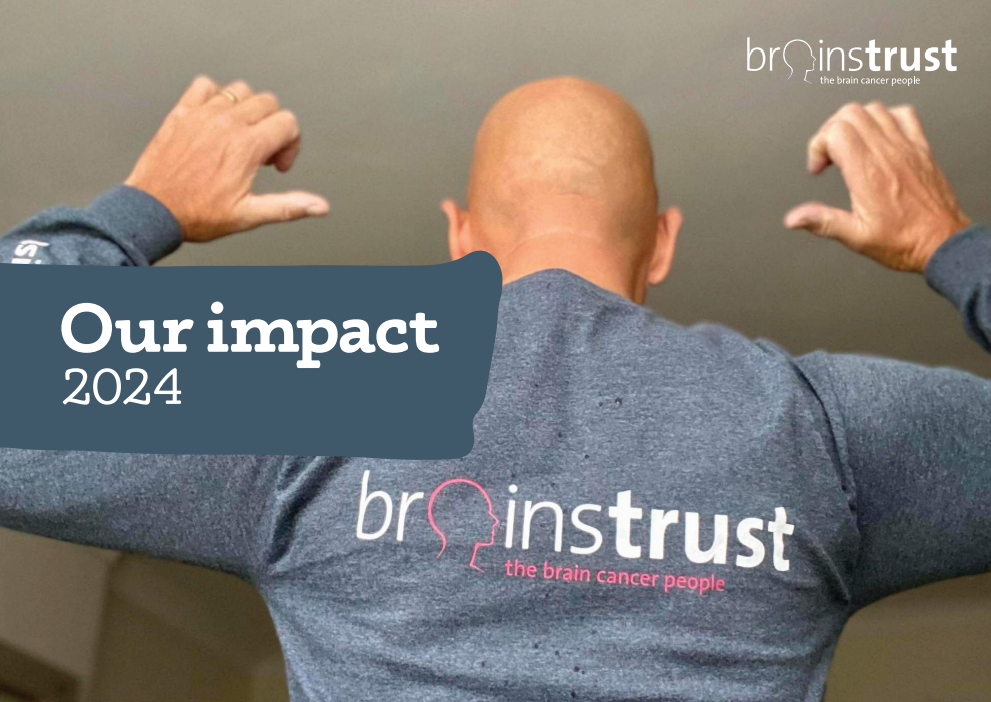The Brain Tumour Tissue Campaign
If there’s one thing that researchers need to find a cure for brain tumours, the cure we all want, it’s a sample of your brain tumour.

On this page you will find:
Change this. Ask about tissue donation today.
To save lives in the future, please think about donating your tissue to research today.
All you need to do for this to happen is to start the conversation with your Neurosurgeon. Ask your them about the consent form at your next appointment.
To help you out with tackling the subject, download and print out either of these leaflets, have a read, and hand the card to your medical team – this will start the conversation. This easy step could save thousands of lives in the future
Or we can start the conversation for you…
If you have had surgery to remove your brain tumour (a resection), or are expecting to have a resection, we can flag up with your surgeon that you wish to have your tumour used for research.
Share some simple details and we will start the conversation with your consultant.
Find out more about how brainstrust is driving research to improve outcomes for people living with a brain tumour.
The Brain Tumour Tissue Campaign: for Clinicians
We want to help you. Seeking consent should be an easy process and could be standard practise. If you have challenges with your consent process, or any general questions about tissue banking, please get in touch and we can link you up with someone who’s been there. You can also use and adapt these forms to suit your needs (courtesy of North Bristol NHS Trust):
- Download Sample Consultee Information Sheet (MS word)
- Download Sample Consultee Declaration Sheet (MS word)
- Download Sample Participant Consent Form (MS word)
- Download Sample Participant Information Sheet (MS word)
We can also share with you some of the pathways currently used to obtain consent for use of brain tumour tissue in future research:

The Brain Tumour Tissue Campaign: partners
This campaign has significant support. We are working together to make sure that more brain tumour tissue is consented for use in research.
 |
 |
 |
 |
 |
 |
We are very lucky to include in our list of Campaign Patrons:
Stephen Venables – Famous British Mountaineer, first British person to summit Everest without supplementary oxygen, whose son Ollie sadly died with a brain tumour www.stephenvenables.com
Dr Kathreena M Kurian BSc, MD, MBBS, FRCPath (Neuro) Consultant Neuropathologist and Honorary Senior Lecturer, Southmead Hospital, Bristol
Prof James AR Nicoll BSc MBChB MD FRCPath Professor of Neuropathology and Honorary Consultant Neuropathologist, University of Southampton
Claire Bullimore – brain tumour patient advocate, broadcaster, speaker and founder of Aunty M brain tumours
The Brain Tumour Tissue Campaign: news
- 24th February 2015 – brainstrust and partners launch The Brain Tumour Tissue Campaign in Bristol
- 3rd July 2015- The Brain Tumour Tissue Campaign presented to healthcare professionals at annual BNOS conference
- 19th October 2015- ‘Brain Tumour Tissue Bank: The brainstrust Proposal’ published in a number of journals













